A very useful way to use a glut of fruit or vegetables ( home grown OR shop bought) is to make Chutney.
Wikipedia ( always useful) describes Chutney as
a term for a variety of sweet and spicy condiments, usually involving a fresh, chopped primary vegetable or fruit with added seasonings. Chutney, as a genre, is often similar to the Pakistani pickle and the salsa of Latin American cuisine, or European relish.
Chutney may be dry or wet; dry chutney is generally in the form of powder. In India, a chutney is often made to be eaten fresh, using whichever strongly-flavored ingredients are locally available at the time. It would not normally contain preserving agents, since it is intended to be consumed quickly after preparation. The Hindi translation of "to make chutney" is a common idiom meaning "to crush". This is because the process of making chutney often involves the crushing the ingredients together.[citation needed]
The use of a stone mortar and pestle is often regarded as vital to create the ideal chutney. It consists of a small stone bowl (called a "kharal" or "khal" in Hindi, Tamil kal கல்), or a flat piece of stone (called a "sil") on which the ingredients are crushed together with a rounded stick of stone or wood (called a "batta", pronounced with a hard 't').
Chutney is more familiar in North America and Europe in a form that can be stored. To this end, vegetable oil, vinegar, or lemon juice are used to enhance the keeping properties.
Beginning in the 1600 chutneys were shipped to European countries like England and France as luxury goods. Western imitations were called "mangoed" fruits or vegetables. In the nineteenth century, brands of chutney like Major Grey's or Bengal Club created for Western tastes were shipped to Europe.
Generally these chutneys are fruit, vinegar and sugar cooked down to a reduction.
The tradition of chutney making spread throughout the British empire, especially in the Caribbean and American South where chutney is still a popular condiment for ham, pork and fish.
So...a tradition of chutney making, hmmm? well the tradition is alive and well at Compost Mansions, that's for sure! I love making Chutney, I usually make 4 or 5 different batches in the autumn and winter, from fresh. glut fruit and veg and then later from stored apples and frozen fruit and veg. I then have lots of jars stored, to give as gifts, to barter for other foods or services and, of course, to eat! I am talking, of course, about the sort which is preserved by having lots of vinegar and sugar in it, potted whilst hot, into warm jars so a vacuum forms when the contents cool and then kept in a sealed jar until ready to eat
I made Apple and Courgette chutney back in September, as I had a lot of Apples and Courgettes to hand
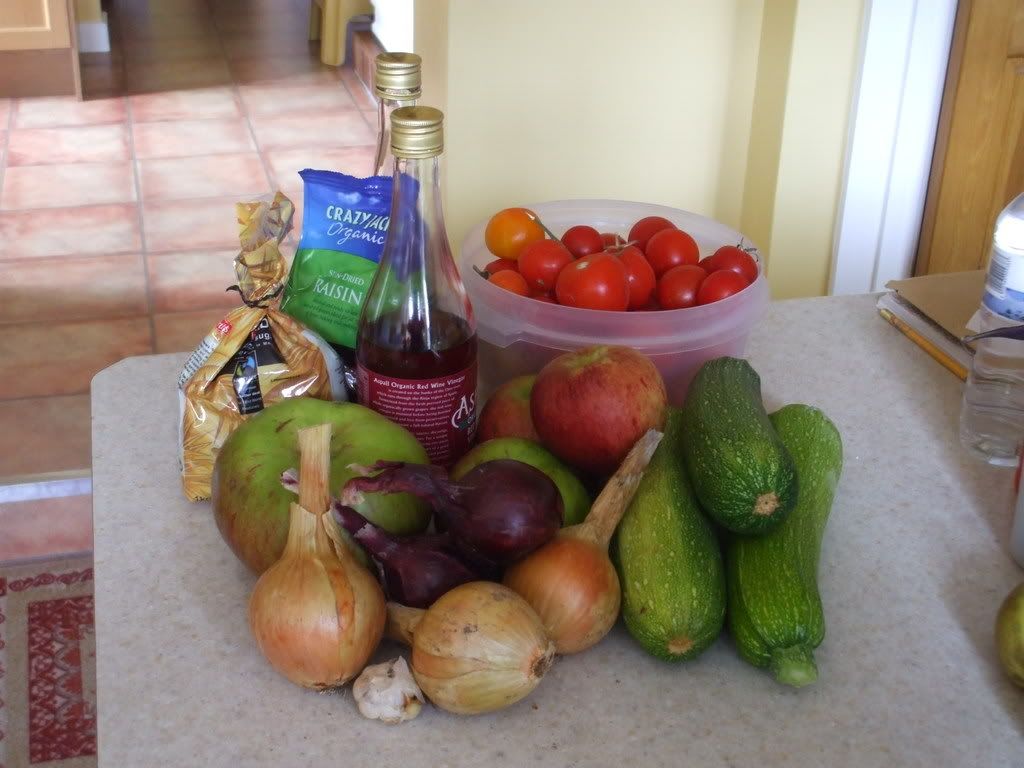
Recipe
1 Kg cored, peeled , diced Apples (Bramley)
1 Kg peeled, diced Courgette
0.5 Kg diced Onion
Some Garlic ( I used about 6 small cloves...and they WERE small!)
0.5 Kg skinned chopped Tomatoes
0.5 Kg chopped Raisins and Sultanas mixed
0.5 Kg Light brown Sugar
0.6 L Cider Vinegar( I actually used a mixture of Cider and Red Wine)
20g Salt
1 tsp Paprika
1/2 tsp Ground Ginger
Black Pepper ( I just grind it into the pan...I used lots)
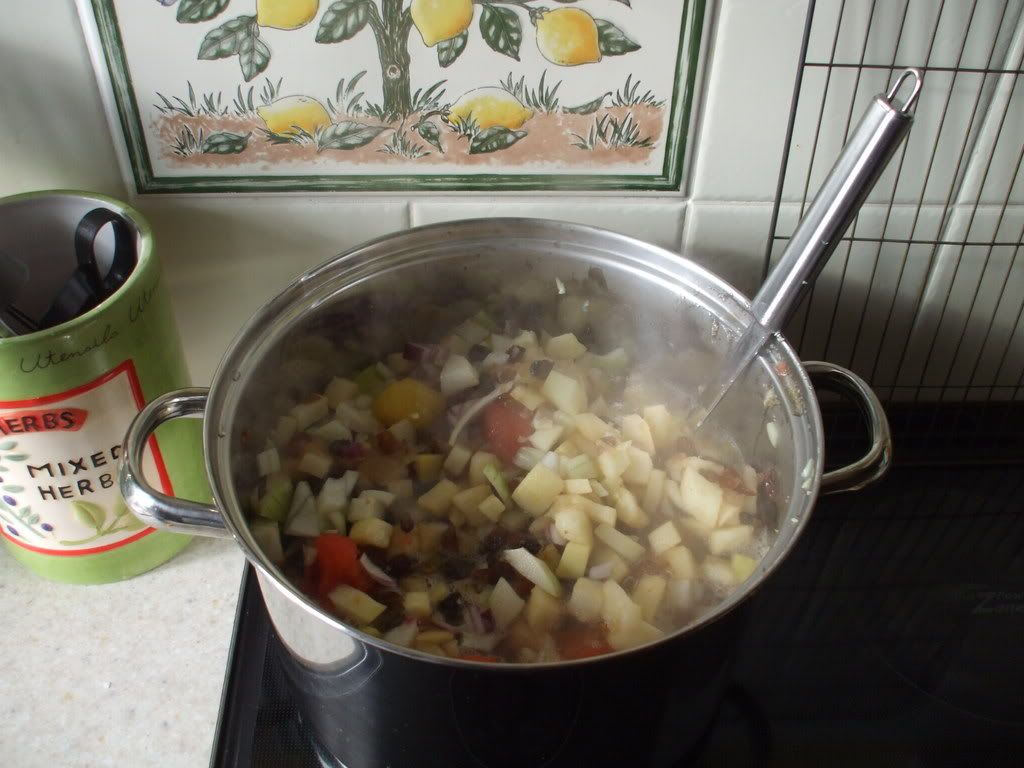
Prepare everything by finely chopping (if you use a machine be careful not to mince too fine or the chutney will be a little mushy), put it in a large Stainless Steel pan, bring to boil, reduce heat to low simmer, leave.
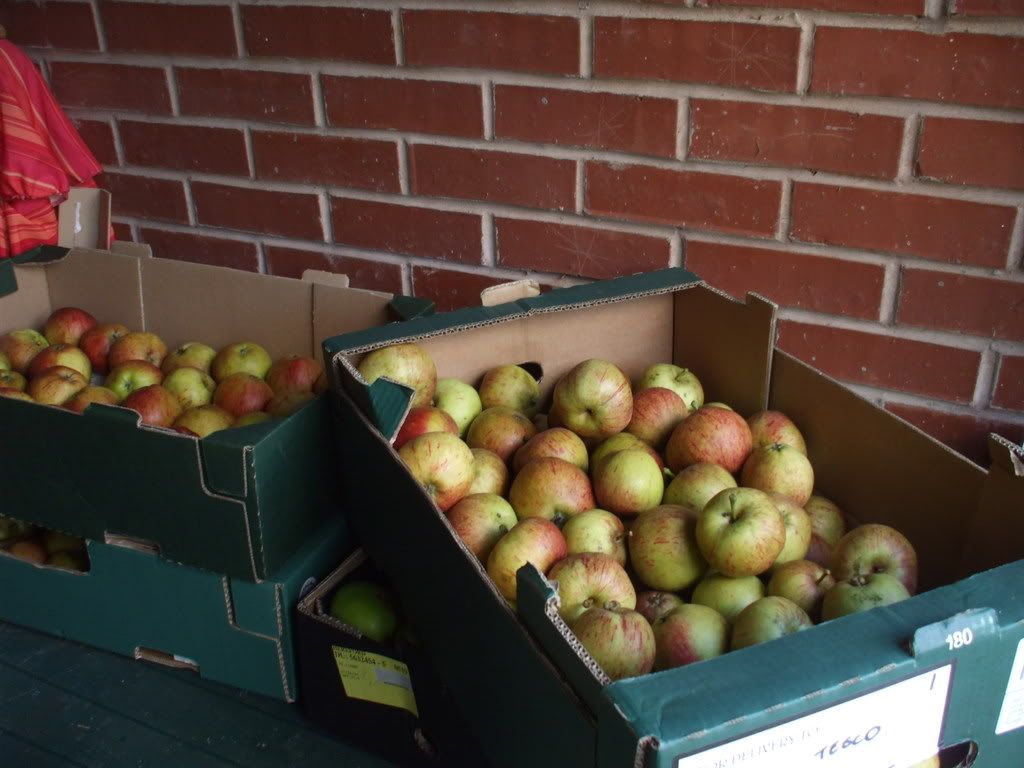
and go and grade apples for storing, clean out hens, drink tea, etc etc....

return now and then to give a stir with a wooden or stainless spoon. About 4 hours later (it may take less time , I find it depends on the size of the base of your pan!) keep a close eye on it to see if it is nearly ready to pot.

Take about 10 washed jars
(350g ish) and lids ( which MUST be vinegar proof! so use old pickles jars for preference!) and put in the oven on a rack ( I use the toaster tray which came with the oven as the jars don't fall off it so easily.
I use recycled jars, as I am not selling my produce. If you want to sell it you need to use new lids (in the UK) and standard sized jars.
EDITED by Compostwoman later for clarity to add
I only tend to re-use the lids once and check the seal VERY carefully each time...and with the button lids it is obvious if the seal has failed......if in doubt get new lids!
glass jars are, of course, virtually endlessly reusable if not damaged...
Heat jars at 120C ish for about 10 mins then turn down oven to 80C until you are nearly ready to pot the chutney, then turn off the oven and allow the residual heat to keep the jars hot ( saves energy!) Try to time this phase so as to coincide with the end of doing the Sunday Roast or some baking....I try but usually fail a bit miserably here!....)
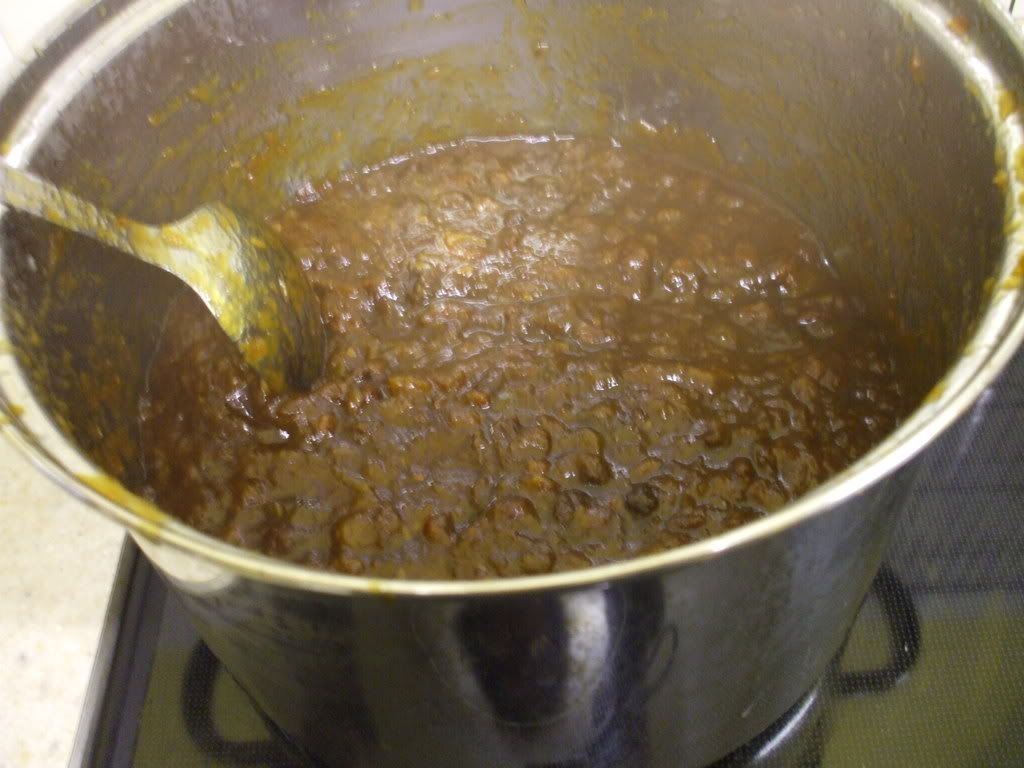
When you think the chutney is nearly done do the "channel" test...draw a spoon through the surface of the chutney, if a channel appears its done. If not, keep simmering for another few mins and test again.
When done, turn off the heat and let the residual heat in the ring ( if electric) finish the simmer (saves energy, but won't work with Gas)
Fill hot jars to almost full, wipe clean, put on lids and screw on tight. Watch out as the jars WILL be hot! I have a stainless jam funnel and a stainless ladle...we got these to make life easier as we make a LOT of jam and chutney! Don't worry if you don't have these, use a Pyrex jug...make sure it is clean and sterilised...and watch out for the hot handle!!
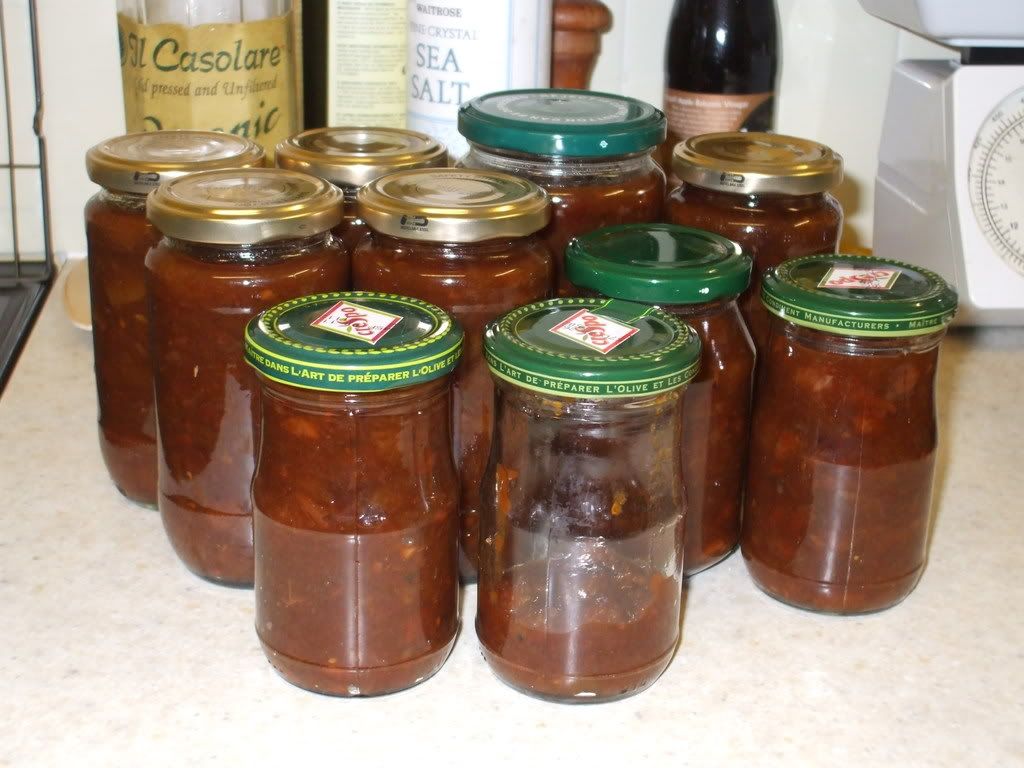
Admire your handiwork, make sure the vacuum "buttons" have pulled down on the lids, if your lids had them, then when cool, LABEL(!) PUT AWAY in a cool dark place to mature for AT LEAST 2months...
Seriously, it WILL taste nicer if you leave it to mature!
I work from an all purpose recipe which I adapt and vary depending on the fruits, vegetables, spices etc. available, and on my mood!
My chutney recipes are basically 600 ml vinegar, 20 g salt, 500 g sugar, assorted spices usually around 2 teaspoons of them (I use ground spices quite happily!),500 g onions and then another 3 Kg of assorted fruit and veg. This makes around 10"chutney/relish" sized jars, the 350 g ones.
I find SOME fruit is needed, even if its only 500 g apples and 500g dried fruit, as apples especially help to thicken the chutney, they and the dried fruit is part of the 3 Kg of assorted stuff though! I also always use Cider vinegar or wine vinegar occasionally, I use Aspalls Organic cider vinegar ( for those in the UK) and find it makes for a smooth result without a harsh vinegary tang...it IS possible to eat my chutney immediately but I would recommend keeping it for at least 2 months, longer if you can!
So, that's how I make chutney. I hope this post has been useful to you and if you don't make chutney at the moment, it will inspire you to have a go. There is nothing to beat home made chutney to liven up a cheese sandwich, or a plate of salads or to add to a curry! And, of course you know what has gone into it and you have saved yourself some money and earned the satisfaction of doing something for yourself.










